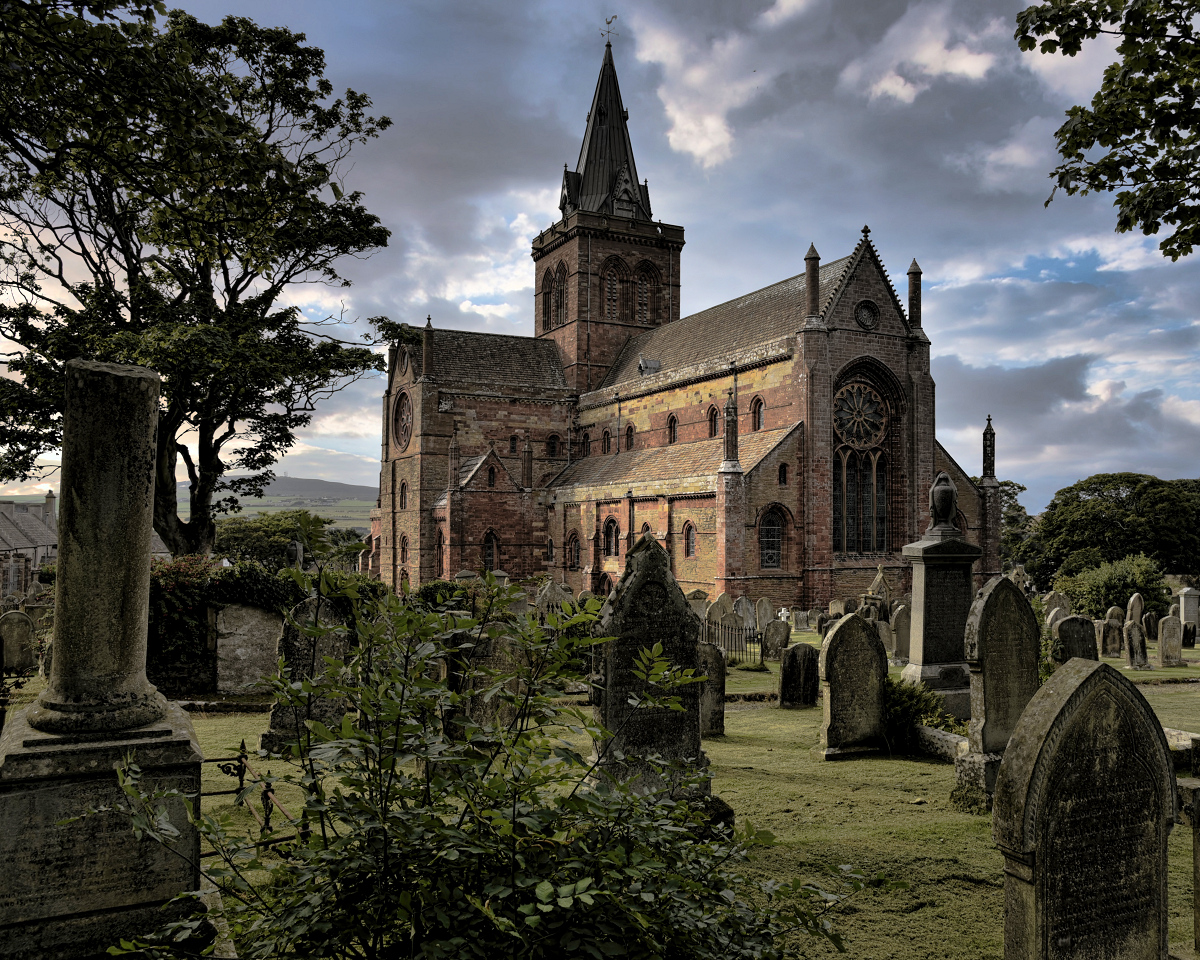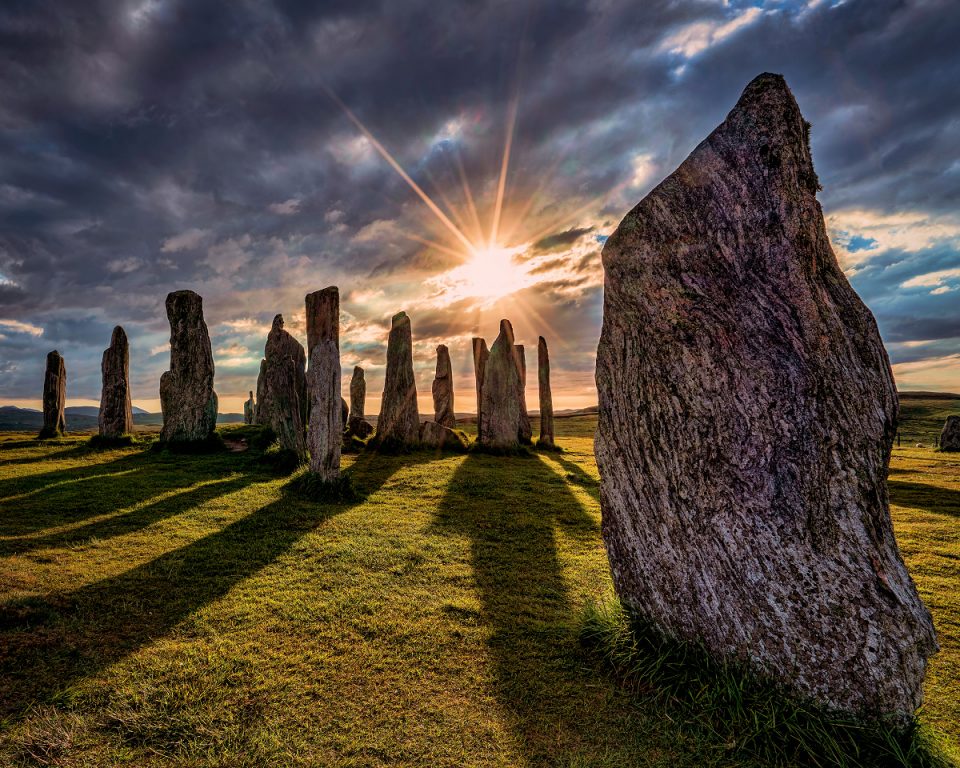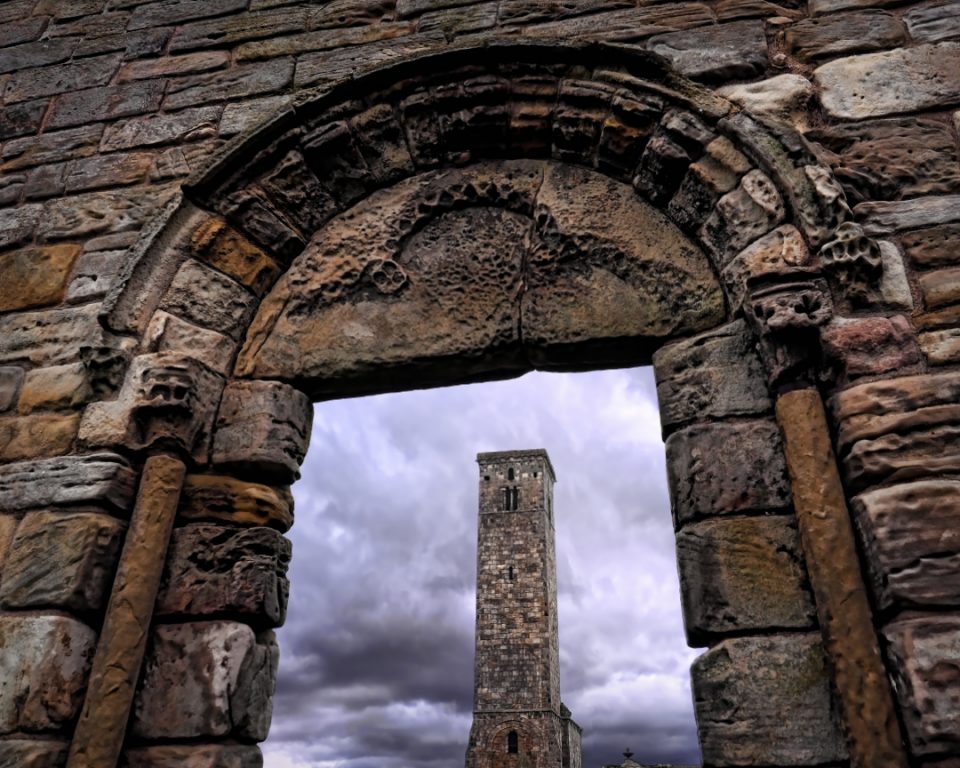Saint Magnus Cathedral in Kirkwall, Orkney, is an old building. By 1919, it was in urgent need of some restoration work. On the 31st of March 1919, the renovators discovered some ashlar stones were loose on one of the pillars in the South Choir Arcade. They investigated further and discovered a hidden cavity within the column. There, resting on a wooden pier was an ancient box. Imagine their awe as they examined the contents – a set of bones including a skull which had been badly damaged. This was the skull of someone who had died from a blow to the head.
There was little question whose relics these were. No doubt they had been hidden away during the Protestant Reformation to prevent their destruction. This was the skeleton of Saint Magnus, the one-time Viking Earl of Orkney who met an untimely death at the hands of his cousin.
Orkney’s Rich Heritage
Orkney has a rich culture handed down from those ancestors who settled in these Islands. There are tales of Trows and the Stoorworm and traditions such as Kirkwall’s ‘Ba’ on New Year’s Day.
To the modern person, Orkney must seem to be an unlikely player in the political manoeuvrings of Scotland. After all, its location is far removed from today’s seats of power. However, there is evidence that people have lived here as far back as Mesolithic times.
When the Neolithic Age arrived, Orkney burst into life in a flurry of building that is unparalleled anywhere else in the United Kingdom. Skara Brae, Maeshowe, the Stones of Stenness and the Ring of Brodgar were all constructed during this period. Recent research based on statistical analysis suggests that Calanais on the Isle of Lewis along with Stenness on Orkney were the two forerunner sites for all the other standing stone monuments in Britain. The building of these stone circles marks the starting point for a ritual practice based on cosmological observation that would last for almost two millennia.
Picts and Vikings
By the fourth century AD the Picts were the predominant force in northern Scotland. Orkney was, at least for a time, part of this Pictish Kingdom, probably with its own local ruler, but owing fealty to a central High King, the King of Fortrui, whose lands likely spanned the coastal reaches of the Moray Firth.
Adomnan, the biographer of St Columba, records that there were Orcadians at the court of the Pictish High King, Bridei, in 565 AD. These Orcadians were described as “hostages” which could imply that relations between Orkney and Pictish King was perhaps strained with the hostages being Bridei’s insurance policy to keep Orkney on a tight leash.
Later, another Bridei, Bridei mac Bili, besieged Orkney in 680AD. However, the age of the Picts would soon come to an end. Looming on the horizon were the sleek, swift longships of the Vikings!
Who was Saint Magnus?
The Norsemen began to colonise Orkney in the eighth century AD with the islands becoming a vital link in their western sea-routes. Exactly how the Norse takeover of Orkney took place remains unresolved to this day. Was it a peaceful integration or did the Norsemen wipe out the indigenous population? However it came about, the first Earl of Orkney was decidedly Norse. The Sea Lords secured their position by marrying through the Scottish royalty thus Saint Magnus could claim blood links to both the Norse Royalty and the House of MacAlpin. But who exactly was Saint Magnus?
Magnus Erlendsson was the son of Erlend Thorfinnsson and Thora Sumarlidsdatter and was born in 1080. His tale is told in the Orkneyinga Saga and is also the subject of the hauntingly beautiful hymn, Manus Mo Ruin.
It is a tale that begins with his father.
A Tale of Twins
Erlend and Paul Thorfinnsson were twin brothers and as such both had claim to the Earldom of Orkney. The brothers became joint rulers and remained on friendly terms until their children grew to adulthood. When it came to the issue of succession, the brothers both favoured their own offspring. Erlend favoured his son Magnus whereas Paul favoured his son Hakon. They decided on a compromise- split the earldom into two territories. Their plan might have worked too, but the Norwegian King, Magnus ‘Barelegs’ blindsided them. He arrived suddenly in Orkney, unseated the Earls, and installed his illegitimate son, Sigurd, in their place. The brothers were banished to Norway. Neither of them survived the winter.
With Sigurd left as ‘King’ of Orkney, King Magnus went on a raiding expedition, bringing the young Magnus and his cousin Hakon with him. No doubt, he was afraid to leave them in his son’s court where they might be potential claimants to the islands.
Magnus’ falls from the King’s favour
King Magnus’ incursion took him down the west coast of Scotland and as far south as Anglesey in Wales. Young Magnus was a Christian and refused to take part in the King’s raids. Instead, he chose to remain on board the ship and sing hymns. This fuelled the king’s wrath and Magnus was forced to slip overboard and swim to the shore of Scotland.
The Golden Age of Magnus’ Rule
Time elapsed. King Magnus died in Ireland in 1102 and Sigurd Magnusson returned to Norway to become joint ruler. Young Magnus’ cousin Hakon quickly manoeuvred himself into the position of Earl. Magnus made representations to the Norwegian throne and was granted his share of the earldom.
Things went well to begin with and their reign from 1105 to 1114 was said to be a just and pleasant one. But nothing causes discord more than simmering envy. The sagas tell us that ‘evil men’ began stirring trouble. As Hakon was jealous of Magnus’ popularity, he was ‘more disposed to listen to these men.’
Saint Magnus and Hakon’s Quarrel
Such was the enmity between the two cousins, that they took their quarrel to a ‘thing’ or an assembly. Battle plans were drawn up. But the battle was averted. Neutral parties persuaded the two earls to make peace. The treaty was to be signed and ratified and a meeting on Egilsay at easter. Each party was to bring only ‘two ships and an equal number of men’.
At the allotted time Magnus set forth. The seas were calm, when suddenly a great wave arose and stuck Magnus’ ship. Surely this was an omen of his impending death.
Hakon’s Treachery
Magnus arrived first. Later that day, eight dragon ships appeared! This was an act of treachery that matched that of Sigurd Eysteinsson – or Earl Sigurd the Powerful, the First Earl of Orkney upon meeting his rival Maelbrigte the Tooth.
Magnus was captured and brought before an assembly of local chieftains. There, the saga emphasises that Magnus concern focused on the welfare of his deceitful cousin’s immortal soul. Thus, he made three suggestions that would save Hakon from breaking his oath by killing an unarmed man:
- Magnus would go on a pilgrimage and never return to Orkney.
- Magnus would be exiled to Scotland and imprisoned.
- Hakon should: “have me mutilated in any way you choose, rather than take my life, or else blind me and lock me in a dungeon”
Hakon was willing to accept the third offer. Alas, the chieftains had had a bellyful of joint rule in Orkney. They leapt to their feet and declared that one of the earls had to die. Of course, Hakon had no intention of giving up either his life or the Earldom. Magnus’ fate was sealed- he “was doomed to death”.
The Martyrdom of Saint Magnus
Hakon ordered Ofeigr, his standard-bearer, to execute his cousin. But the warrior refused emphatically. Enraged, Hakon then turned to his cook, Lifolf, and commanded him to kill Magnus by striking him on the head. It was said that Magnus prayed for his executioners with his dying breath. It is thought that this most likely occurred on the 16th of April 1117.
In a final act of contempt, Earl Hakon refused to grant Magnus a Christian burial and had him interred where he fell.
Miraculous Happening After the Dead of Saint Magnus
Hakon might have thought he had disposed of his cousin but then the miracles began. The site of his murder miraculously transformed from rocky and overgrown terrain to a green field. Thora, Magnus’ mother pleaded that Magnus be granted a Christian burial. Hakon relented and Magnus’ corpse was exhumed and buried at Christchurch, Birsay, at the chapel which his grandfather Thorfinn Sigurdsson had commissioned.
Where he was laid to rest, a bright heavenly light shone above Magnus’ grave, and people began to flock to the site. The Orkneyinga Saga goes on to explain the miraculous healing which took place there.
Sainthood
However, not everybody approved of Magnus’ cult following. William the Old, Bishop of Orkney declared that it was ‘heresy to go about with such tales.’ The bishop was promptly struck blind, his sight only returning after praying on Magnus’ grave. However, the return of his sight occurred soon after meeting with Magnus’ nephew Rognvald Kali Kolsson.
In 1136 Bishop William had Magnus’ remains exhumed, washed and tested in consecrated fire. With their holiness confirmed, Magnus was decreed a saint and his relics enshrined above the Birsay kirk’s altar.
Saint Magnus Cathedral
Before long, Rognvald Kali Kolsson turned his attention to his uncle Magnus’s half-share of the Orkney earldom. In 1129, he was handed the earldom by the Norwegian king, Sigurd the Crusader. But Rognvald decided to bide his time. In fact, until King Harald, Sigurd’s successor, ratified the claim.
Subsequently, Rognvald assembled a fleet and put to sea, with the intention of overthrowing Paul Hakonsson, the existing earl of Orkney. This did not go to plan. The sea was stormy and upon his arrival, he was met with fierce opposition. Earl Paul was not going to submit without a fight.
Stealth was needed. Rognvald’s father, Kol, came up with an idea. He advised his son to “build a stone minster at Kirkwall more magnificent than any in Orkney, that you’ll have dedicated to your uncle the holy Earl Magnus and provide it with all the funds it will need to flourish. In addition, his holy relics and the episcopal seat must be moved there.”
Thus Rognvald set about wooing the hearts of the Orcadian people with the promise of the finest church the north had ever seen in memory of his saintly uncle, Magnus, a man whom the islanders venerated above all.
Meanwhile, behind the scenes, the conniving Rognvald had Earl Paul kidnapped in Rousay and spirited from the islands. With the earldom in Rognvald’s hands, work on the cathedral started in 1137. Alas, Earl Rognvald never saw his cathedral completed. In 1158, he was murdered by a rebellious Scottish chieftain. Rognvald’s bones were returned to Kirkwall, where they were eventually placed within the cathedral he had founded. Once the cathedral was consecrated, Magnus’ relics were transferred there and entombed in a magnificent shrine.
The Reformation
In 1560, Scotland became a Protestant country, and the shrine of Magnus was dismantled. The bones of the saint disappeared, presumed destroyed. Then in the 18th Century, Rognvald’s relics were discovered in a stone pillar opposite the one that would, in 1919, be found to contain Saint Magnus’ remains.
Ironically, today the Earl’s Palace stands in ruins to the side of the Cathedral while the Cathedral, in all its splendour, still dominates the Kirkwall skyline.




